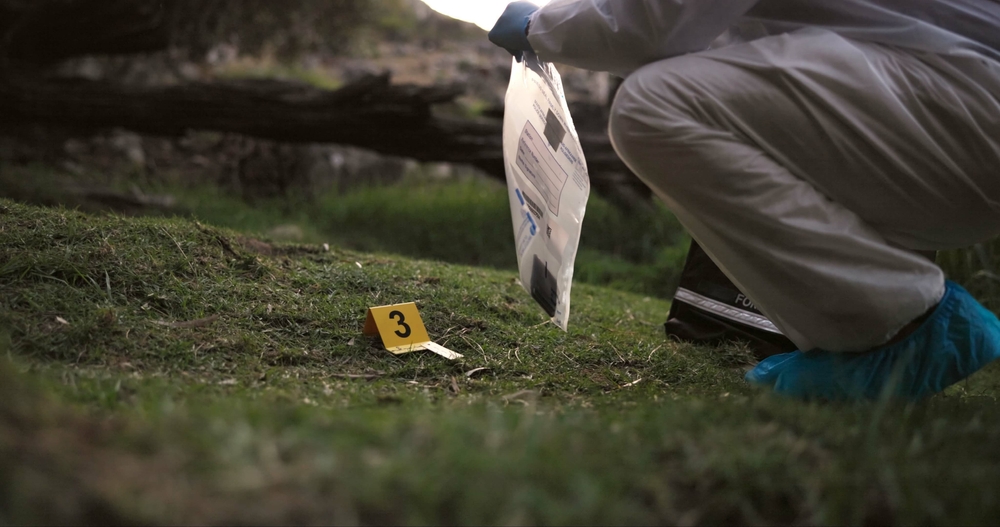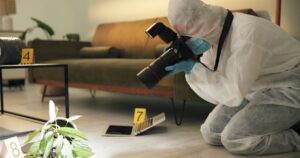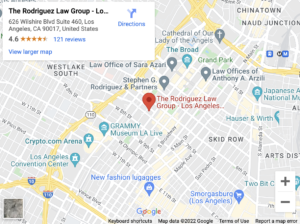The Role of Forensic Evidence in Murder Trials

Forensic evidence plays a critical role in modern murder trials, offering an objective and scientific basis for determining guilt or innocence. Unlike testimonial evidence, which memory or perception can influence, forensic evidence provides tangible proof of what occurred by applying scientific principles.
Forensic evidence has become indispensable in both the investigation and prosecution of murders, allowing law enforcement agencies and legal professionals, including Los Angeles murder defense lawyers, to uncover crucial details about the crime and establish a narrative based on fact.
Today, it is difficult to convict someone of murder without a wealth of forensic evidence to support the allegations against them.
Understanding Forensic Evidence in the Context of a Murder Trial
Forensic science refers to the application of scientific methods and techniques to the investigation of a crime. In murder trials, forensic evidence encompasses many disciplines, including biology, chemistry, physics, and digital science.
Some of the most common forms of forensic evidence used in a murder trial could include:
DNA Evidence
DNA is the genetic blueprint of all living organisms. It is found in bodily fluids such as blood, saliva, or hair. DNA profiling allows investigators to identify individuals with high accuracy by comparing genetic material found at crime scenes to that of suspects.
More recently, genetic genealogy has played a role in these investigations. This is where investigators can track down family members using DNA evidence and carefully narrow the suspect pool until they identify the party they want to arrest.
Fingerprint Analysis
Each person’s fingerprints are unique, making them a powerful tool for identification. Fingerprints left at a murder scene can be lifted from various surfaces, analyzed, and compared with known prints. This is one of the oldest forms of forensics still in use today.
Ballistics and Firearm Examination
In cases involving firearms, forensic experts analyze bullets, shell casings, gunshot residue, and the firearm itself to determine if it was used in the crime. Ballistic matching can trace bullets to the weapon that fired them, helping to link suspects to the scene.
Toxicology Reports
Toxicology involves the study of chemicals, drugs, or toxins in the human body. In murder cases, toxicologists analyze blood and tissue samples from victims to identify substances that may have contributed to their death.
Toxicology testing of the suspect can also identify if they had used drugs or alcohol when the murder occurred. This is especially important in cases involving vehicular manslaughter or other similar negligence accidents.
Blood Spatter Analysis
As we all learned from watching Dexter, analyzing bloodstains at a crime scene can reveal critical information. This could include the weapon used, the number of blows, and the position of the victim and attacker during the crime. Blood spatter patterns are crucial in reconstructing the events leading to a murder.
Autopsy Reports
The forensic pathologist performs an autopsy to determine the cause and manner of death. These findings provide key evidence in murder cases, especially when the death is suspicious, sudden, or unexplained.
Sometimes, they could even testify about their findings at trial. This is common when they are the only party with the training and experience to uncover how the death occurred.
Digital Forensics
As the digital landscape expands, electronic evidence, including emails, text messages, and social media posts, is increasingly relevant in murder investigations. Digital forensics examines digital devices to retrieve, preserve, and analyze data that might be relevant to the crime.
Everyone who uses a smartphone or accesses the Internet leaves a digital footprint. Investigators are receiving special training to uncover this footprint and understand what they find in the context of a criminal investigation.
The Process of Collecting and Analyzing Forensic Evidence
 The journey from collecting forensic evidence at the crime scene to presenting it in the courtroom is a meticulous one. Proper collection and preservation are critical to ensure that evidence remains uncontaminated and admissible in court. The process investigators must follow includes several steps:
The journey from collecting forensic evidence at the crime scene to presenting it in the courtroom is a meticulous one. Proper collection and preservation are critical to ensure that evidence remains uncontaminated and admissible in court. The process investigators must follow includes several steps:
Crime Scene Investigation
The crime scene is the starting point of any forensic analysis. Investigators meticulously document and photograph the scene, noting the position of the body, weapons, and other physical evidence.
They wear protective gear to avoid contaminating the scene and use specialized tools to collect samples, such as swabs for DNA or bags for physical evidence like bullets. They must follow careful protocols and best practices or risk having evidence thrown out in court because of contamination or issues with the chain of custody.
Preservation of Evidence
After collection, forensic evidence must be carefully preserved to prevent contamination or degradation. For example, biological samples like blood and tissue are stored in conditions that maintain their integrity, while digital devices must be kept in conditions that prevent data corruption.
They must also be careful to maintain a documented chain of custody. This is tracking the evidence and where it goes by keeping a list of each person and party who handles it. For example, it could go from a local police department to a state crime lab to a private laboratory.
Laboratory Analysis
Once collected, forensic evidence is sent to a lab for analysis. Different types of evidence require specialized techniques. DNA samples undergo processes like polymerase chain reaction (PCR) to amplify genetic material, while toxicology reports are generated through chemical analysis.
Depending on the circumstances and the capabilities of different labs, this could require local, state, federal, and private labs to analyze and contribute to findings. For example, a large city police department might have its own lab with capabilities similar to those of many smaller states.
Expert Testimony
Forensic experts are often called to testify in court, explaining their findings and methodologies to the jury. Their testimony can help jurors understand complex scientific data, making it an essential component of the legal process.
The defense also calls in experts to testify in many cases. These experts may counter the findings of the laboratory analysis conducted by the prosecution’s experts.
The Importance of Forensic Evidence in the Courtroom
Forensic evidence can profoundly affect murder trials. It often provides the linchpin of the prosecution’s case, offering physical proof that directly ties a suspect to the crime or rules them out entirely.
Some ways forensic evidence can make or break a murder case include:
Establishing a Timeline
Forensic evidence can help establish the time of death, which is critical in determining whether a suspect had the opportunity to commit the crime. For example, forensic entomologists can analyze the life stages of insects found on a corpse to estimate how long the person has been dead.
Other factors related to how the body reacts after death are more commonly used to establish the time of death. This includes changes in temperature, rigor mortis, and livor mortis, according to the National Center for Biotechnology Information.
Linking Suspects to the Crime Scene
DNA, fingerprints, and other forms of trace evidence can directly link a suspect to the crime scene or the victim. Even microscopic evidence, such as a single hair or fiber, can identify the alleged perpetrator.
In many cases, showing a suspect was at the murder scene proves the hardest and most important part of proving the case and getting a conviction. This makes identifying, collecting, and preserving evidence linking the suspect to the scene vital.
Corroborating Witness Testimony
Forensic evidence often serves as a way to verify or challenge witness testimony. For instance, if a witness claims the suspect was at a particular location at the time of the murder, digital forensics may analyze GPS data, cell phone records, or surveillance footage to confirm or disprove their statement.
Exonerating the Innocent
Forensic evidence doesn’t just help convict the guilty. It is equally important in exonerating the innocent. DNA testing has led to the exoneration of many individuals who courts wrongfully convicted of murder, sometimes after spending years in prison. This highlights the crucial role forensic science plays in achieving justice.
Challenges and Limitations of Forensic Evidence
Despite its importance, forensic evidence is not without challenges and limitations. Some common issues with forensic evidence include:
Contamination and Human Error
If investigators improperly collect or store forensic evidence, contamination can occur. Contamination might lead to wrongful convictions or other issues with the case. Human error, whether in the collection, analysis, or interpretation of evidence, is another potential concern.
False Positives
No forensic technique is infallible, and tests have produced false positives in some high-profile cases. This is particularly relevant with fingerprint and DNA analysis, where closely related individuals or degraded samples can lead to misidentification and the arrest and prosecution of the wrong individual.
Subjective Interpretation
Some forensic techniques, such as blood spatter analysis and handwriting comparison, rely on expert interpretation. By their very nature, these interpretations are subjective.
Different experts may arrive at different conclusions based on the same evidence. This makes this type of forensic evidence less reliable than other types, such as blood typing, fingerprints, or DNA.
The CSI Effect
The portrayal of forensic science in popular media has led to what the National Institute of Justice dubbed the CSI Effect. Jurors expect definitive forensic evidence in every case. This can create unreasonable expectations in the courtroom and may result in juries placing too much emphasis on forensic evidence or being unduly skeptical when the prosecution cannot offer it.
Backlogs and Resource Limitations
Many forensic labs face backlogs due to limited resources, leading to delays in the analysis of evidence. This can slow down investigations and trials. Additionally, smaller jurisdictions may lack access to the same forensic technologies as larger, better-funded agencies, leading to disparities in the quality of evidence presented at trial.
High-Profile Murder Cases Involving Forensic Evidence
The use of forensic evidence in murder trials is best illustrated through high-profile cases you are likely already familiar with. Several notorious cases have hinged on the presence or absence of forensic evidence.
This includes:
- O.J. Simpson Trial (1995): The O.J. Simpson case heavily relied on forensic evidence, including DNA and blood analysis. While the evidence seemed overwhelming, issues with the collection and handling of forensic material, along with the defense’s ability to cast doubt on its reliability, contributed to Simpson’s acquittal.
- Casey Anthony Trial (2011): The murder trial of Casey Anthony for the death of her daughter, Caylee, involved significant forensic testimony. This primarily centered around the presence of chloroform and decomposition in Anthony’s car. Despite this, the jury found the forensic evidence insufficient for a conviction, leading to a not-guilty verdict.
- The Golden State Killer (2020): Decades after a spree of murders and sexual assaults, the Golden State Killer was finally caught using genetic genealogy, a cutting-edge application of DNA evidence. Investigators used DNA from crime scenes, compared it with online genetic databases, and traced it back to Joseph James DeAngelo, leading to his arrest and conviction.
The Future of Forensic Science in Murder Trials
 As technology evolves, so will the role of forensic evidence in murder trials. Emerging fields such as genetic genealogy, advanced facial recognition, digital investigations, and artificial intelligence (AI) are pushing the boundaries of forensic science.
As technology evolves, so will the role of forensic evidence in murder trials. Emerging fields such as genetic genealogy, advanced facial recognition, digital investigations, and artificial intelligence (AI) are pushing the boundaries of forensic science.
For example, AI could enhance digital forensics, making the analysis of vast amounts of data quicker and more accurate.
Furthermore, advancements in DNA analysis may allow for more comprehensive and accurate profiling, even from severely degraded samples. As the science continues to evolve, it will play an even more significant role in ensuring that justice is served, both in convicting the guilty and protecting the innocent.
According to Scientific American, the advancing DNA analytics and related technology have already helped link unidentified bodies from the 9/11 attacks to victim’s families. In the coming years, we expect them to help solve decades-old cold cases across the nation.
Forensic Science Is Vital to Modern Murder Trials
Forensic evidence is a key component of modern murder trials. It provides a scientific and objective basis for proving guilt or innocence, helping to shape both the investigation and prosecution of these cases. While it is not without challenges, forensic evidence remains a powerful tool. A skilled Los Angeles criminal defense attorney can analyze and challenge forensic evidence, ensuring that it is accurate, properly handled, and legally admissible.
As technology advances, the future promises even greater accuracy and reliability in forensic science.
If you have questions about the role forensic evidence might play in a case against you or a loved one, the Rodriguez Law Group is here to help. Call (213) 995-6767 to learn more.


